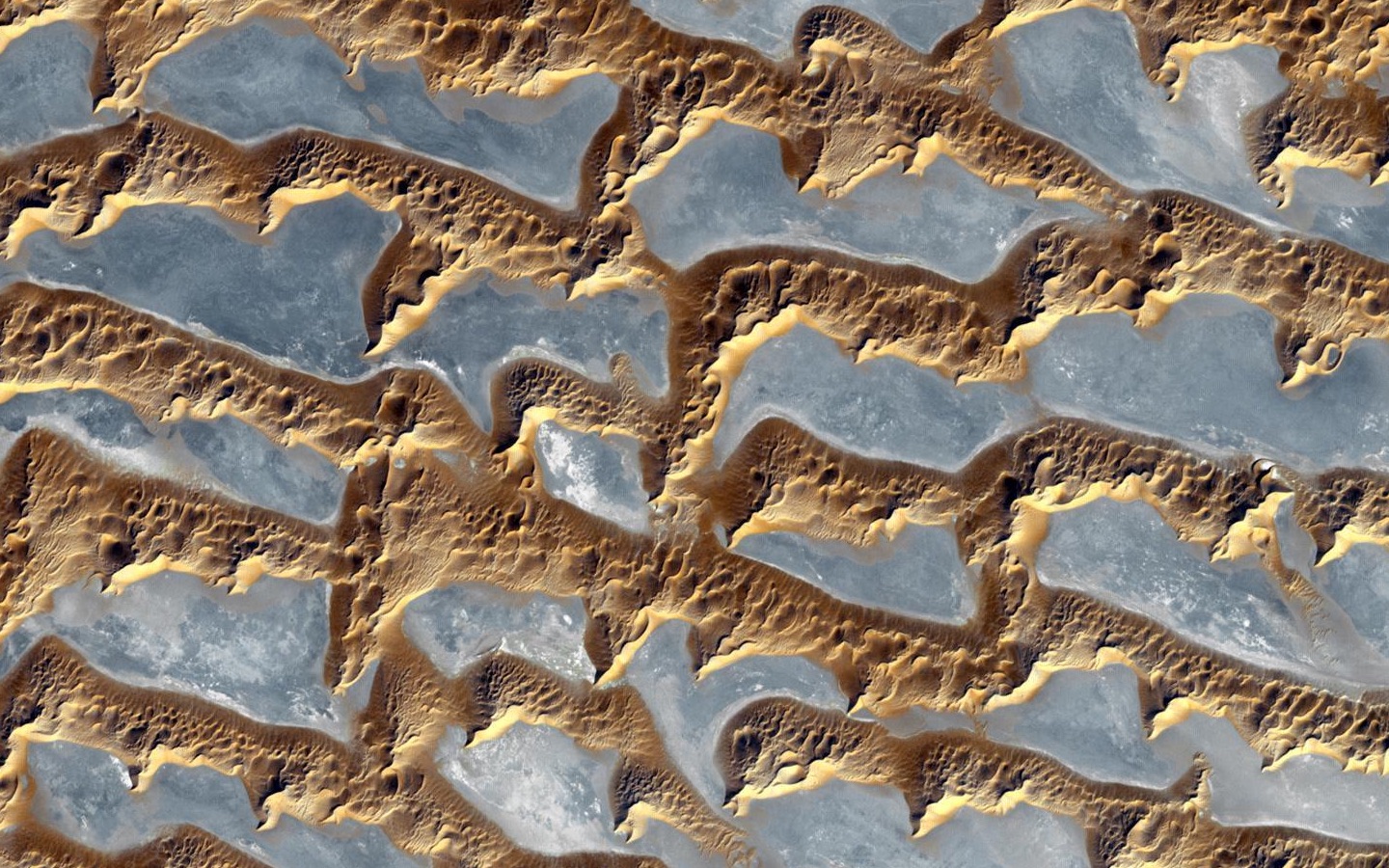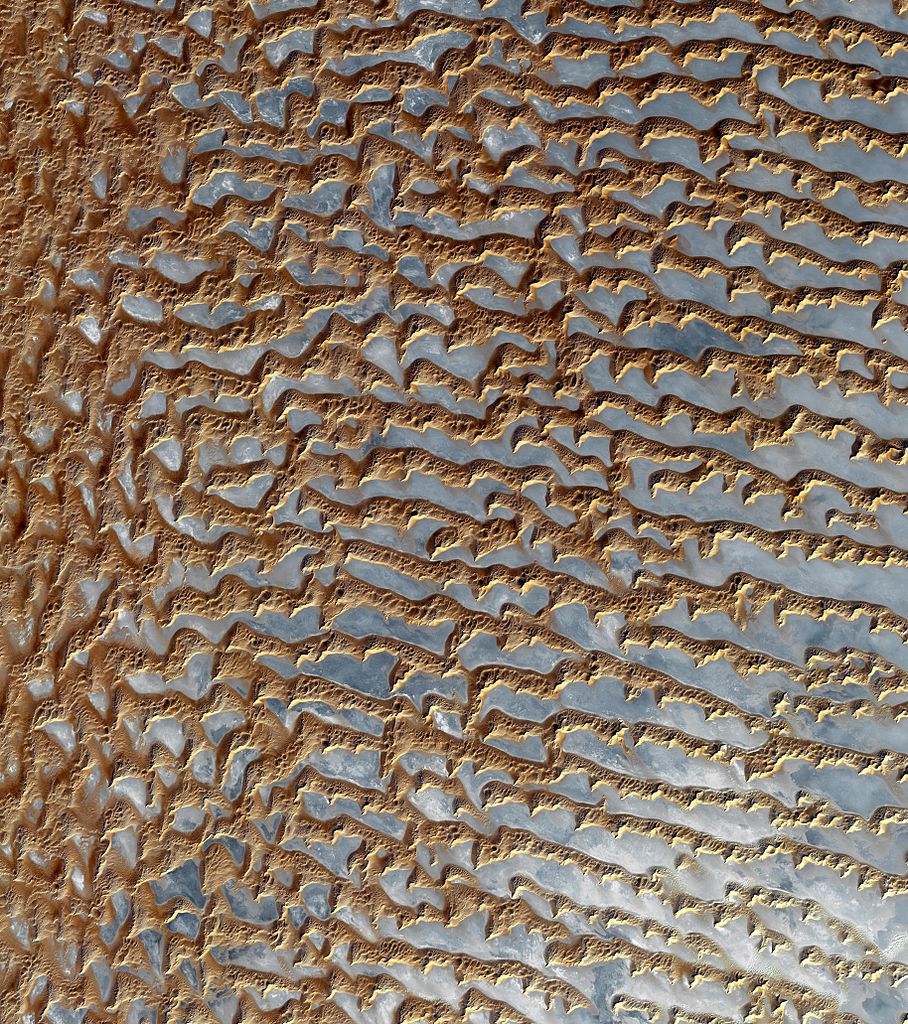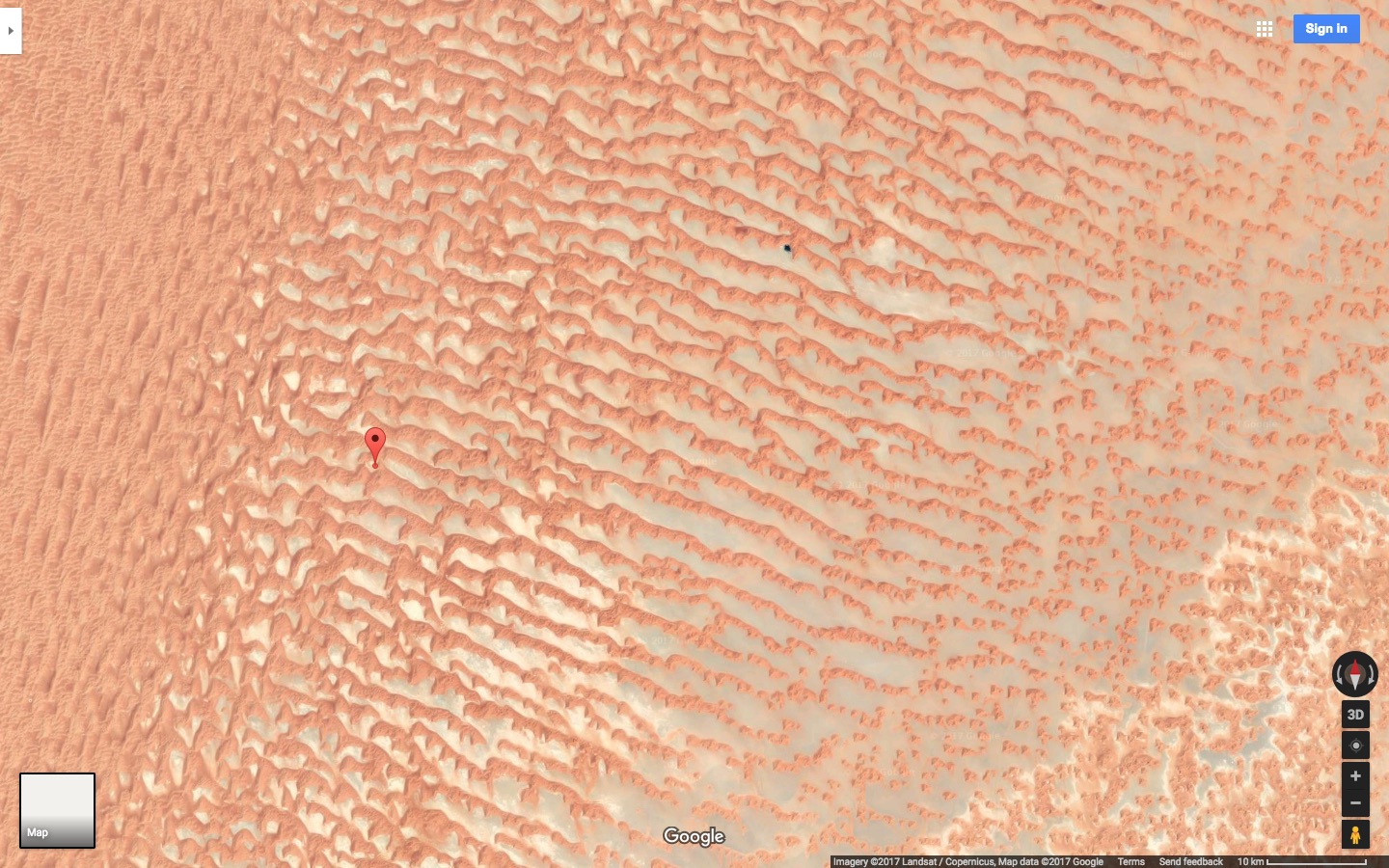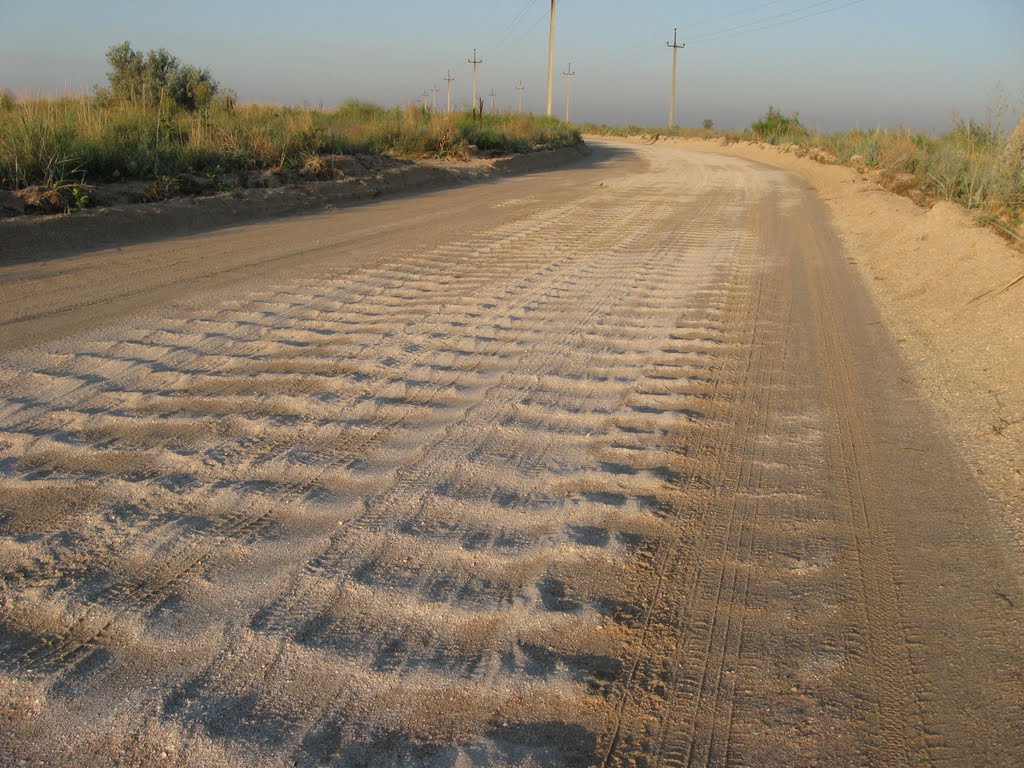update: Searching "Rub' al Khali Empty Quarter" found "Q2: What are sabkhas?" in https://www.geocaching.com/geocache/GC6BYQ0_rub-al-khali-the-empty-quarter which seems to be related.
From the NASA image gallery; and also Catalog Page for PIA11084 where the caption says:
Original Caption Released with Image: The Rub' al Khali is one of the largest sand deserts in the world, encompassing most of the southern third of the Arabian Peninsula. It includes parts of Oman, United Arab Emirates, and Yemen. The desert covers 650,000 square kilometers, more than the area of France. Largely unexplored until recently, the desert is 1000 km long and 500 km wide. The first documented journeys made by Westerners were those of Bertram Thomas in 1931 and St. John Philby in 1932. With daytime temperatures reaching 55 degrees Celsius, and dunes taller than 330 meters, the desert may be one of the most forbidding places on Earth.
The image was acquired December 2, 2005, covers an area of 54.8 x 61.9 km, and is located near 20.7 degrees north latitude, 53.6 degrees east longitude.
The U.S. science team is located at NASA's Jet Propulsion Laboratory, Pasadena, Calif. The Terra mission is part of NASA's Science Mission Directorate.
Image Credit: NASA/GSFC/METI/ERSDAC/JAROS, and U.S./Japan ASTER Science Team
Image Addition Date: 2008-08-08
Question: The pattern shown in this image has an amazing amount of approximate repetition of shapes; long straight segments with a periodicity of about 2 kilometers, "stair steps" northward and sharp, pointy extensions southward. Is there any understanding how such a distinct pattern could be formed?
below: "Rub' al Khali (Arabian Empty Quarter) sand dunes imaged by Terra (EOS AM-1)" cropped and full sized (reduced resolution) images from here.
below: screen shot from Google Maps confirming orientation. Marker is at 20.7N, 53.6E.



